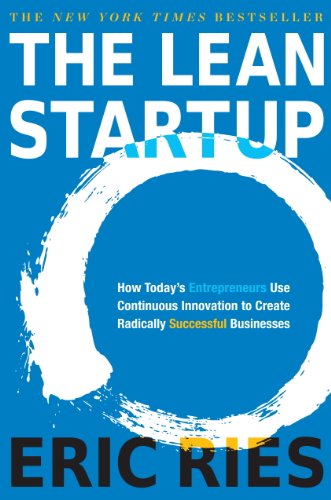

This article is an excerpt from the Shortform summary of "The Lean Startup" by Eric Ries. Shortform has the world's best summaries of books you should be reading.
Like this article? Sign up for a free trial here .
Dropbox is now a technology giant, valued at $10 billion in a 2014 funding round. It’s a very complex product, honed over a decade of development and hundreds of millions of dollars of investment.
But Dropbox didn’t start with the slick, seamless product you use today.
So let’s go back to the beginning, before Dropbox had a polished product and thousands of employees. Back to Dropbox’s original Minimum Viable Product (MVP). If you’re an aspiring entrepreneur, be emboldened by the idea that Dropbox started with just about as much as you have right now.
The Dropbox Explainer Video MVP
If you haven’t heard of it yet, Dropbox syncs your files across all your devices. If you upload a Word doc to your Dropbox folder on your laptop, you can then access the same doc on your phone. If you then edit the doc on your phone, the saved changes will show up in your computer’s version too.
This is a very complex product to build, requires technical wizardry to integrate into the operating system, handle large files, deal with file conflicts, and more, all packed in a seamless user experience.
Over a decade ago, when Drew Houston founded Dropbox in 2007, he knew the file sync problem was a problem he faced intimately, and suspected others faced as well. Famously, he forget to take his USB drive on a long bus ride, depriving of the files he needed to work. On this bus ride, he started building the first version of Dropbox.
He had built an early prototype, but it was from seamless and bug-free. Drew knew his product prototype wasn’t ready for a public launch yet, but he still wanted to gauge whether his product solved problems for other people.
So Drew recorded a video of his prototype, demonstrating its main features and use cases. He released his Dropbox explainer video MVP to Hacker News on April 5, 2007, as part of his application to Y Combinator.
At the bottom of the video was a form to join the waiting list for the private beta.
Why was this a Minimum Viable Product? In the Lean Startup framework, this video ‘product’ tested the value hypothesis – that people actually faced a file sync problem, and Dropbox was the solution to that problem.
This Dropbox MVP was simple and not ready for public use. It worked only on Windows, and Drew Houston hadn’t developed a Mac port yet. It probably couldn’t support more than dozens of users at once. But if you use Dropbox today, you can see the core principles of how Dropbox works in this early Dropbox MVP – it got the point across. Potential users didn’t even need to use the actual product – the video explainer was compelling enough to answer the value hypothesis.
The video hit a nerve – because it so clearly showed the benefits of the software, it drew hundreds of thousands of views. One commenter says:
This is genius. It’s is problem everyone is having, and everyone knew it. If it really works as well as it looks in that demo then they nailed it.
-brett
The Dropbox explainer video MVP showed why the Dropbox experience was magical, how you could instantaneously make a change on one computer and see it reflected live online. They grew their beta waiting list from 5,000 to 75,000 overnight.
Clearly, after this point Dropbox still needed to deliver with an actual product (which they did). But Drew was now confident he had tapped into a problem lots of people felt but no one was solving.
In fact, Drew didn’t even need to have coded up a working version of the product. If he wanted to simplify the Dropbox MVP further, he could have just mocked up the product’s behavior, showing file changes with sleight of hand and editing. (If you do this, though, you need to be sure that you have a remote chance of being able to build the technical solution. Read about Concierge MVPs).
Iterating on the MVP
When something works, iterate on it to get even more mileage.
In 2008, a year after the original first Dropbox MVP above, Drew Houston made another explainer video, this time with a Mac client, and many more jokes. It’s much more polished and shows greater capabilities than the first Dropbox explainer video:
This video got even more press, leading to mentions in tech news outlets and thousands of people joining the waiting list.
Dealing with Critical Feedback
As usual, not everyone was a supporter. And if you launch your own Minimum Viable Product, you’ll likely get mixed feedback too. (Some people love being critical.)
Some said the Dropbox explainer video didn’t show a full replacement for USB drives, as was promised:
The only problem is that you have to install something. See, it’s not the same as USB drive. Most corporate laptops are locked and you can’t install anything on them. That’s gonna be the problem. Also, another point where your USB comparison fails is that USB works in places where you don’t have internet access. -nickb
Others said Dropbox was unnecessary for someone with enough technical experience:
For a Linux user, you can already build such a system yourself quite trivially by getting an FTP account, mounting it locally with curlftpfs, and then using SVN or CVS on the mounted filesystem. From Windows or Mac, this FTP account could be accessed through built-in software. -BrandonM
Finally, others questioned the business model, based on storage costs:
$0.15 per GB-Month of storage used. $0.20 per GB of data transferred.
So, that means Dropbox is going to have to resell S3 at a premium for the added value of these nice Coda-like features. Would you pay a premium for these Dropbox features? Maybe, I don’t know.
Also, what’s the typical use case? How much bandwidth/storage are people going to consume? Because, if I store 100 megabytes… my bill will pennies every month (going on S3 prices). You cannot transact pennies per user per month. If you could, then you’ve cracked the micropayments problem wide open. Maybe there would be a base fee? Like $5/month or something. Would people pay that much for online storage? -jganetsk
Now, Dropbox is now a worldwide company worth billions. So clearly it got many things right along the way.
But that doesn’t mean the commenters were wrong. These were legitimate concerns. Highly technical people were indeed building their own solutions. And it was unclear whether anyone would be willing to pay for a convenience layer on top of commoditized mass storage.
But you don’t need to please everyone. And you shouldn’t even try. As Paul Graham suggests, “Sometimes the right unscalable trick is to focus on a deliberately narrow market. It’s like keeping a fire contained at first to get it really hot before adding more logs.”
Drew Houston was convinced that there were plenty of people who:
- faced the very problem he did
- wanted a plug-and-play solution that simply worked
- would be willing to pay for this
The original Dropbox MVP explainer video proved this to him. If Dropbox could make a small group of users VERY happy, chances were they could expand to many more people.
The rest is history.
If you’re building an MVP, think back to the Dropbox explainer video MVP here. How can you convey the user experience you want to build at minimal cost? How can you get feedback earlier on whether anyone even wants what you’re building?
An explainer video MVP might be the solution.
———End of Preview———

Like what you just read? Read the rest of the world's best summary of "The Lean Startup" at Shortform . Learn the book's critical concepts in 20 minutes or less .
Here's what you'll find in our full The Lean Startup summary :
- How to create a winning Minimum Viable Product
- How to understand how your startup will grow
- The critical metrics you need to track to make sure your startup is thriving






